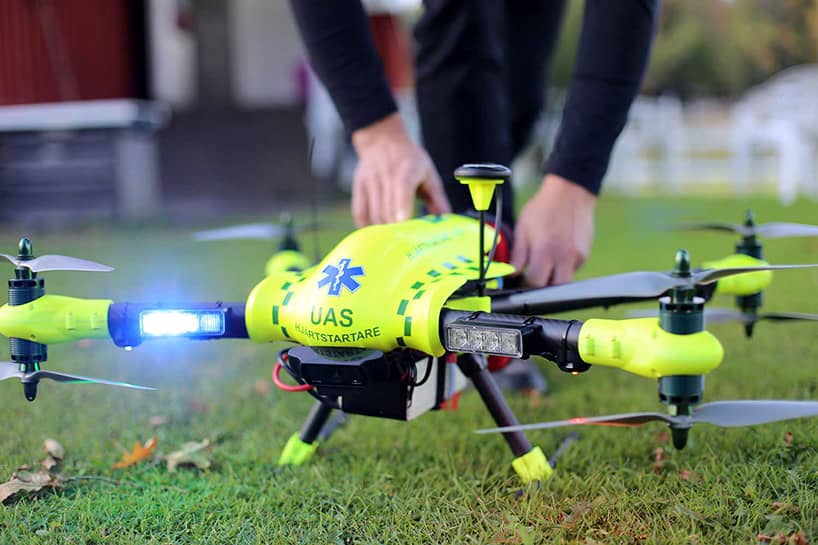Drones were just a fantasy for the ordinary people some years ago but ever since their commercialization, they appear to be becoming an essential part of our lives. Apart from the hobbyist cameras, package deliveries, transporting lab samples, providing mobile communication, drones are prepared to serve much more important purposes. They have unlimited potential when it comes to providing assistance in emergencies or rescue operations. A Swedish startup FlyPulse has brought in life-saving drones to be launched in case of emergency
Heart disease is the most common ailment all around the world and over a million people become a victim of fatal heart attacks every year. In most of these cases, the situation can be saved if medical help is delivered immediately. The LifeDrone-AED by FlyPulse is a quadcopter that comes embedded with an automated external defibrillator. The drone is designed to be dispatched to a location where a heart attack is reported, and reduce the time between the cardiac arrest and defibrillation to enhance the chances of survival.
FlyPulse writes on their website, “Every year 10000 people in Sweden experience cardiac arrest outside of the hospital. About 500 of these survive. The single most important factor for achieving higher survival is to reduce the time between the cardiac arrest and defibrillation of the patient.”
The LifeDrone has a range of ten miles and it works with an alarm system and software that can be installed anywhere. The research published in the Journal of American Medical Association suggests that the drone-delivered AED can beat the ambulances to the emergency scene which lowers the response time by over 16 minutes. FlyPulse drone can reduce the emergency reaction time by about three minutes when present in the geographical work area.
The only limitation of the FlyPulse drone is that it requires a trained operator to use the defibrillator. The team intends to train all the people who will be using the system by providing demonstrations. Before the drones manage to hit the skies to begin proper service, they still require a few more test flights. The advancement is worthy of appreciation, nonetheless.
Images: Designboom

